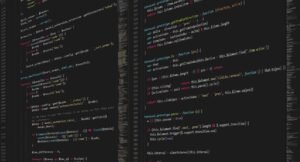AI Without Machine Learning
Artificial Intelligence (AI) is a concept often associated with Machine Learning (ML), where computer systems learn from data and adapt their behavior without explicit programming. However, AI can exist without ML as well, relying on predefined rules and expert systems to perform specific tasks. While ML-driven AI has gained immense popularity, understanding the potential of AI without machine learning is crucial.
Key Takeaways:
- AI can be achieved without the use of machine learning algorithms.
- Traditional AI systems use predefined rules and expert knowledge.
- AI without machine learning is well-suited for tasks with clear rules and limited data.
Understanding AI Neatly Separated from Machine Learning
AI without machine learning operates on a different premise than the more common ML-driven AI. It emphasizes human-expertise and predefined rules for making decisions or solving problems, rather than learning from data. **This approach allows for direct control over the system’s behavior, reducing the risk of unforeseen behavior due to learning algorithms.** Although ML-powered AI often provides more flexibility, there are domains where the deterministic nature of rule-based AI is preferred.
Benefits and Applications of AI without Machine Learning
AI systems following predefined rules have certain advantages that make them useful in specific scenarios. *For example, in safety-critical applications such as autonomous vehicles, rule-based AI can adhere to strict regulations and predefined responses, minimizing the chances of accidents caused by learning from unrepresentative data or unexpected scenarios.* This deterministic nature also aids in legal, regulatory, and ethical compliance.
Rule-based AI has been successfully deployed in various domains, including:
- Medical diagnosis
- Expert systems for decision-making
- Industrial process control
- Fraud detection
Comparing Rule-Based AI vs. ML-Driven AI
| Rule-Based AI | ML-Driven AI |
|---|---|
| Explicitly defined rules and expert knowledge | Learning from data using complex algorithms |
| Interpretability and explainability | Black-box decision-making |
| Domain-specific knowledge | Generalization capability |
| Limited adaptability | Continuous learning and flexibility |
Real-World Examples
Rule-based AI systems have showcased their effectiveness in numerous applications. Here are a few notable examples:
- IBM’s Deep Blue: The chess-playing computer defeated world chess champion Garry Kasparov using a rule-based approach, evaluating moves based on predefined heuristics.
- MEDiC: A medical diagnostic expert system that utilizes rules and clinical data to assist doctors in diagnosing diseases and recommending treatments.
- Spam Filters: Email filters often rely on predefined rules to identify and classify spam messages.
Conclusion
AI can be achieved without machine learning and relies on predefined rules and expert knowledge. While ML-driven AI offers greater flexibility and adaptability, rule-based AI excels in domains with clear rules and limited data. Understanding the differences between these approaches helps in choosing the most appropriate AI techniques for specific applications.

Common Misconceptions
Misconception 1: AI without machine learning is not possible
Many people mistakenly believe that AI and machine learning are synonymous, assuming that AI cannot exist without machine learning techniques. However, it is important to note that AI encompasses a broader spectrum of technologies and techniques, of which machine learning is just one component.
- AI can be built using rule-based expert systems
- AI can utilize knowledge graphs to represent and reason about information
- AI can incorporate logic-based reasoning to make decisions
Misconception 2: AI without machine learning is not as effective
Another common misconception is that AI without machine learning is not as effective or powerful. While machine learning has proven to be incredibly powerful for some applications, it is not the only way to achieve intelligent behaviors.
- AI without machine learning can excel in rule-based domains with clearly defined decision-making processes
- AI without machine learning can be more interpretable and transparent, which can be crucial in certain situations
- AI without machine learning can be more computationally efficient for certain tasks
Misconception 3: AI without machine learning is outdated
Some individuals may believe that AI without machine learning is outdated and less relevant in today’s fast-paced technological landscape. However, there are several situations where AI techniques that predate machine learning can still be highly applicable and valuable.
- AI without machine learning can be used in systems where explainability is paramount
- AI without machine learning can be more suitable for tasks that require strict adherence to predefined rules or regulations
- AI without machine learning can be a more accessible entry point for developers or organizations new to AI
Misconception 4: AI without machine learning is simple and limited
It is a misconception that AI without machine learning is simple or limited in its capabilities. AI without machine learning can be leveraged to solve complex problems and provide intelligent solutions.
- AI without machine learning can be used in complex expert systems that require extensive domain knowledge
- AI without machine learning can employ advanced logic-based reasoning techniques to analyze complex data and derive insights
- AI without machine learning can excel in situations where human-understandable explanations are crucial
Misconception 5: AI without machine learning is not scalable
Lastly, some individuals may assume that AI without machine learning is not scalable to large datasets or real-world applications. However, this is not necessarily the case, as AI techniques without machine learning can still handle big data and offer scalable solutions.
- AI without machine learning can incorporate distributed computing techniques to process large volumes of data
- AI without machine learning can leverage parallel processing to achieve scalability
- AI without machine learning can scale by employing techniques like data partitioning or caching

The Rise of Artificial Intelligence (AI)
With the rapid advancements in technology, artificial intelligence (AI) has become an integral part of various industries. However, contrary to popular belief, AI can exist without machine learning. In this article, we explore ten fascinating aspects of AI that operate independently from machine learning algorithms.
1. Expert Systems
Expert systems are AI programs that utilize a knowledge base to make intelligent decisions. These systems can analyze vast amounts of data and provide expert-level recommendations. For instance, an expert system can diagnose diseases based on symptoms, aiding in accurate and timely medical treatments.
2. Rule-Based Systems
Rule-based systems employ a set of predefined logical rules to solve complex problems. These rules operate independently of machine learning algorithms and can be employed in various domains. One example is fraud detection systems, which use a predefined set of rules to identify suspicious activities and prevent financial fraud.
3. Natural Language Processing (NLP)
Natural Language Processing enables machines to understand and interpret human language. NLP systems can analyze text, speech, and even emotions. For instance, sentiment analysis algorithms can determine the overall sentiment behind a social media post, allowing companies to gauge customer satisfaction in real-time.
4. Computer Vision
Computer Vision focuses on enabling machines to see and process visual information. This field of AI allows machines to interpret images, recognize objects, and even understand complex scenes. For instance, facial recognition algorithms are widely used for security purposes, enabling quick identification of individuals.
5. Speech Recognition
Speech Recognition technology allows machines to comprehend human speech and convert it into text or commands. Applications range from voice assistants like Siri and Alexa to automated transcription services. These systems enable seamless human-computer interaction without relying on machine learning.
6. Expert Chatbots
Expert chatbots are AI-driven conversational agents that provide specialized knowledge and assistance. By leveraging predefined knowledge bases, these chatbots can efficiently address customer queries or offer technical support. They operate independently of machine learning techniques while providing valuable assistance.
7. Automated Planning Systems
Automated planning systems use AI algorithms to generate optimal plans and make informed decisions. These systems consider factors such as time constraints, resource allocation, and goal achievement. For example, automated planning systems optimize transportation routes, reducing fuel consumption and delivery time.
8. Smart Recommendation Systems
Smart recommendation systems suggest relevant items or content based on user preferences and behavior. These systems can analyze user history, item attributes, and other relevant data to make accurate recommendations. For instance, personalized movie recommendation systems enhance user experience by suggesting films tailored to their interests.
9. Robotics and Automation
AI is at the core of robotics and automation, enabling machines to perform complex tasks autonomously. Robots equipped with AI can navigate environments, manipulate objects, and even learn from their interactions. This allows for increased productivity in manufacturing, surgery, and other industries.
10. Symbolic Reasoning Systems
Symbolic reasoning systems utilize logic and rules to solve problems and make intelligent decisions. This branch of AI focuses on high-level, abstract reasoning, often used in complex problem-solving. One application is chess-playing programs, which use symbolic reasoning to evaluate moves and strategize against human opponents.
In conclusion, while machine learning is undoubtedly a powerful tool within AI, there exist numerous aspects of AI that operate independently from machine learning algorithms. Expert systems, natural language processing, computer vision, and other AI branches function using predefined knowledge, rules, and logical reasoning. This versatility showcases the wide range of AI applications across industries, even without reliance on machine learning techniques.
AI Without Machine Learning
Frequently Asked Questions
-
What is AI without machine learning?
- AI without machine learning refers to artificial intelligence systems that function without relying on machine learning algorithms. Instead of learning from data, these systems are pre-programmed with explicit rules and instructions to perform specific tasks.
-
How does AI without machine learning work?
- AI without machine learning works through predetermined rules and logic programmed by human developers. These rules define how the system processes information and makes decisions, without the need for learning from data. The system operates based on its programmed instructions, without adapting or improving on its own.
-
What are the benefits of AI without machine learning?
- AI without machine learning can provide predictable and deterministic results, as the system always follows the set rules. It may be useful in situations where transparency and understanding of decision-making processes are vital. Additionally, it can be more efficient in terms of computational resources as it doesn’t require extensive training or continuous updates from new data.
-
What are the limitations of AI without machine learning?
- AI without machine learning has limited adaptability and learning capabilities. It cannot improve or evolve its performance over time without intervention from developers. Additionally, it may struggle with complex and unstructured data that cannot be easily represented through predefined rules and instructions.
-
What are some applications of AI without machine learning?
- AI without machine learning can be applied in areas where explicit rules and deterministic outcomes are desired, such as rule-based expert systems and decision-support applications. It may also be suitable for tasks that involve well-defined problems and have limited variability.
-
What are some examples of AI without machine learning?
- Examples of AI without machine learning include certain chatbot systems that use scripts to handle user interactions, rule-based systems in healthcare to diagnose specific conditions, and algorithms for game-playing based on pre-defined strategies rather than learning from opponents.
-
Is AI without machine learning considered “true” AI?
- AI without machine learning is a form of AI but may not be considered as “true” AI by some definitions. This is because it lacks the ability to learn and adapt based on new information or experiences, which is a key characteristic of many modern AI systems.
-
Is AI without machine learning less efficient than AI with machine learning?
- AI without machine learning can be more efficient in terms of computational resources, as it doesn’t require extensive training or constant updates from new data. However, it may have limitations in handling certain types of complex and unstructured data, where AI with machine learning can excel.
-
Can AI without machine learning be combined with machine learning techniques?
- Yes, AI without machine learning can be combined with machine learning techniques if desired. The pre-programmed rules and logic can provide a foundation, while machine learning can be utilized to enhance the system’s capabilities, adaptability, and decision-making through learning from data.
-
What does the future hold for AI without machine learning?
- The future of AI without machine learning may involve further advancements in rule-based systems and the integration of other AI techniques. As technology evolves, there may be developments in hybrid AI approaches that combine the benefits of both machine learning and explicit rule-based systems.
“`




